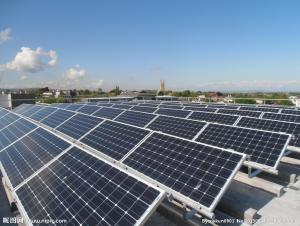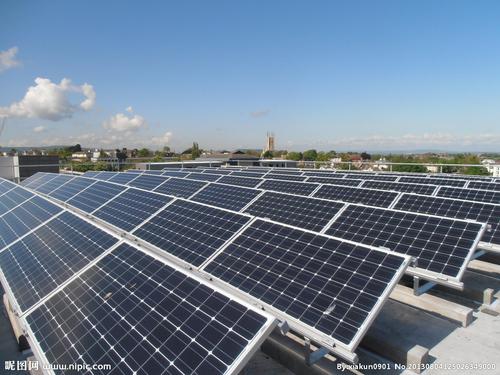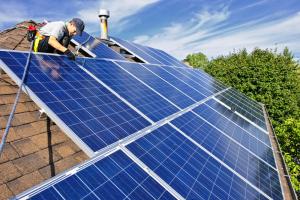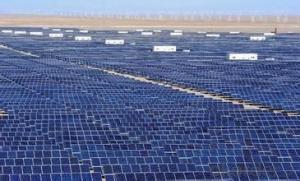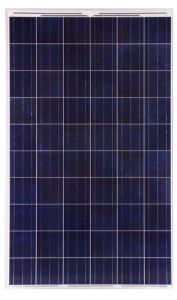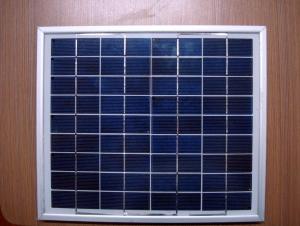Musk Solar Panels Solar Module4
- Loading Port:
- China Main Port
- Payment Terms:
- TT OR LC
- Min Order Qty:
- -
- Supply Capability:
- -
OKorder Service Pledge
OKorder Financial Service
You Might Also Like
Solar Module
ABOUT YINGLI GREEN ENERGY
Yingli Green Energy Holding Company Limited (NYSE: YGE) is one of
the world’s largest fully vertically integrated PV manufacturers, which
markets its products under the brand “Yingli Solar“. With over 7.0GW
of modules installed globally, we are a leading solar energy company
built upon proven product reliability and sustainable performance. We
are the fi rst renewable energy company and the fi rst Chinese company
to sponsor the FIFA World CupTM.
PERFORMANCE
- High effi ciency, multicrystalline silicon solar cells with high transmission
and textured glass deliver a module effi ciency of up to 16.0%,
minimizing installation costs and maximizing the kWh output of your
system per unit area.
- Tight positive power tolerance of 0W to +5W ensures you receive
modules at or above nameplate power and contributes to minimizing
module mismatch losses leading to improved system yield.
- Top ranking in the “TÜV Rheinland Energy Yield Test” and the
“PHOTON Test” demonstrates high performance and annual energy
production.
RELIABILITY
- Tests by independent laboratories prove that Yingli Solar modules:
Fully conform to certifi cation and regulatory standards.
Withstand wind loads of up to 2.4kPa and snow loads of up to
5.4kPa, confi rming mechanical stability.
Successfully endure ammonia and salt-mist exposure at the highest
severity level, ensuring their performance in adverse conditions.
- Manufacturing facility certifi ed by TÜV Rheinland to ISO 9001:2008,
ISO 14001:2004 and BS OHSAS 18001:2007.
WARRANTIES
- 10-year limited product warranty1.
- Limited power warranty1: 10 years at 91.2% of the minimal rated power
output, 25 years at 80.7% of the minimal rated power output.
1In compliance with our Warranty Terms and Conditions.
QUALIFICATIONS & CERTIFICATES
IEC 61215, IEC 61730, MCS, CE, ISO 9001:2008, ISO 14001:2004, BS OHSAS
18001:2007, PV Cycle, SA 8000
ELECTRICAL PERFORMANCE
Electrical parameters at Standard Test Conditions (STC)
Module type YLxxxP-29b (xxx=Pmax)
Power output Pmax W 260 255 250 245 240
Power output tolerances ΔPmax W 0 / + 5
Module effi ciency ηm % 16.0 15.7 15.4 15.1 14.8
Voltage at Pmax Vmpp V 30.3 30.0 29.8 29.6 29.3
Current at Pmax Impp A 8.59 8.49 8.39 8.28 8.18
Open-circuit voltage Voc V 37.7 37.7 37.6 37.5 37.5
Short-circuit current Isc A 9.09 9.01 8.92 8.83 8.75
Electrical parameters at Nominal Operating Cell Temperature (NOCT)
Power output Pmax W 189.7 186.0 182.4 178.7 175.1
Voltage at Pmax Vmpp V 27.6 27.4 27.2 27.0 26.8
Current at Pmax Impp A 6.87 6.79 6.71 6.62 6.54
Open-circuit voltage Voc V 34.8 34.8 34.7 34.6 34.6
Short-circuit current Isc A 7.35 7.28 7.21 7.14 7.07
STC: 1000W/m2 irradiance, 25°C cell temperature, AM1.5g spectrum according to EN 60904-3.
Average relative effi ciency reduction of 3.3% at 200W/m2 according to EN 60904-1.
NOCT: open-circuit module operation temperature at 800W/m2 irradiance, 20°C ambient temperature, 1m/s wind speed.
OPERATING CONDITIONS
Max. system voltage 1000VDC
Max. series fuse rating 15A
Limiting reverse current 15A
Operating temperature range -40°C to 85°C
Max. static load, front (e.g., snow) 5400Pa
Max. static load, back (e.g., wind) 2400Pa
Max. hailstone impact (diameter / velocity) 25mm / 23m/s
CONSTRUCTION MATERIALS
Front cover (material / thickness) low-iron tempered glass / 3.2mm
Cell (quantity / material / dimensions /
number of busbars)
60 / multicrystalline silicon / 156mm x 156mm / 2 or 3
Encapsulant (material) ethylene vinyl acetate (EVA)
Frame (material / color / anodization color /
edge sealing) anodized aluminum alloy / silver / clear / silicone or tape
Junction box (protection degree) ≥ IP65
Cable (length / cross-sectional area) 1000mm / 4mm2
Plug connector
(type / protection degree) MC4 / IP67 or YT08-1 / IP67 or Amphenol H4 / IP68
PACKAGING SPECIFICATIONS
Number of modules per pallet 29
Number of pallets per 40' container 28
Packaging box dimensions
(L / W / H) 1700mm / 1135mm / 1165mm
Box weight 568kg
Unit: mm
• Due to continuous innovation, research and product improvement, the specifi cations in this product information sheet are subject to change
without prior notice. The specifi cations may deviate slightly and are not guaranteed.
• The data do not refer to a single module and they are not part of the offer, they only serve for comparison to different module types
- Q: I'm curious to know if the small solar panels on a calculator (ie TI-32) could produce a voltage similar to what is used in a single-use (disposable) camera, approximately 4V.
- It isn't Volts that matter if you're trying to put the calculator solar panel on the camera. It would be the amps. The calculator's solar panel will put out however many volts or very close to what the battery puts out. If you want you can test it out with a Volt/Ammeter. You see, those cameras use 2 double A batteries. They are going to put out a higher current than the small dime shaped battery in the back of your calculator; a higher voltage perhaps too. Those disposable cameras have a photo flash capacitor in them that has to charge. You can hear them charge up when you tell it to turn on the camera's flash. Sounds like a winding then the little orange light comes on. That light means the capacitor is charged. You SHOULDN'T be able to change out the batteries in the camera with a solar panel from a calculator without having to wait days for that flash capacitor to charge. Sorry. EDIT: HOWEVER, you can take multiple solar panels and wire them in a parallel circuit to get more current(amperes) or wire them in a series circuit to get a higher voltage. If you were to do this you could power whatever you wanted with them. Even your house if you were to get a rectifier to convert the power from DC to AC.
- Q: Hi, I am starting to get curious about the pros/cons of installing solar panels - has anyone done it and is it worth it?
- In the state of Pennsylvania in the USA, a very basic 5KW solar installation will cost you $35,000. Of that you will recover approximately $28,000 over the next five (5) years between the State and the Feds. Making your net-cost something between $7,000 and $9,000 depending on various factors. All other things being equal in a standard household with fuel-based heat and window units vs. central AC, this system will provide roughly 50% of power required with a payback of approximately eight (8) years (with electricity at $0.4/kwh). The system has an estimated forty (40) year service life. Without _all_ the subsidies, the payback is longer than the estimated system life, especially if you consider the time-value of money. The life-cycle cost of a photo-voltaic array is horrendous. By that, I mean the total cost of producing the panels, installing them, and then removing them and disposing of them in an environmentally correct manner. All that added in and there is a negative payback. So, it all depends on what one defines as worth it. Putting the cost onto taxpayers via governmental subsidy to make an otherwise wretchedly expensive process viable may give you all sorts of warm-and-fuzzy feelings about renewable resources and reducing dependence on foreign oil and so forth. But the reality is that the true cost of solar panels exceeds that of nuclear power per KW delivered. Even today when nuclear plants start in the Billions-with-a-B in any currency you would care to name.
- Q: How much electricity does a solar panel produce?
- The amount of electricity a solar panel produces depends on various factors such as its size, efficiency, location, and weather conditions. On average, a standard-sized solar panel can generate around 250 to 400 watts of electricity per hour under optimal conditions. However, this output can vary significantly throughout the day and across different seasons.
- Q: I want to be more green and if I get the panels will I still have a regular electric bill?
- There okorder / Why pay thousands of dollars for solar energy ($27,000 average cost) when you can build your own solar panel system for just a fraction of the retail cost. You can build a single solar panel or you can build an entire array of panels to power your whole house. Some people are saving 50% on their power bill, some people are reducing their bill to nothing. But what’s most impressive is that just by following these instructions some are even making the power company pay them!
- Q: I have a cabin in the woods and need more light. I do have enough sun but I was wondering how or where do I get a solar panel to lead to a power outlet? In a perfect world I would like to get a solar panel with a connecting wire to an outlet or something so I could power a small TV. I know its hard enough but can I get that pre-made? Or even lastly should I look at wind power consider I would like this to be under $500? Thank you for putting up with this bundle of questions.
- A typical solar panel will deliver 50 watts of power in the form of 24 volts DC. You need 20 volts AC. So here is what it takes: Since you will need at least 200 watts to do a small TV, you need four solar panels, and a solar controller. Then you need a 24 volt solar type battery to load the output of the panels. Next you need an inverter. This is a device that changes 24 volts DC into 20 volts AC, which you can wire to a standard outlet for the TV set. Solar panels cost around $6 per watt of power. 200 X $6 = $200 Solar Controller will cost around $50 The battery will cost around $00 The inverter will cost around $200 You could get by with less than 200 watts of solar panels if you just let it charge the battery all day and only use the TV for an hour or two in the evening with the TV running on the inverter which is powered by the battery. The link is for a similar system ready to go. Wind is not a viable option.
- Q: I was watching an idiot abroad, and I saw a family that lived in tent like huts, with no plumbing. And they had a solar panel, now if they can afford it, I know I can. Where do you get cheap ones?
- We are having solar panels installed this Friday. Call a company called Solar City. You can work it through them 3 different ways, you can buy them out right and reap 00% savings, or lease them (like we are) and sign a contract. You won't pay a dime to lease them but your savings won't be as much. The plus side is, you don't have the huge expense either and they are responsible for the maintenance. Lastly, you can lease as the latter option, and purchase during any point of the lease at a pro-rata cost. You can also chose to buy the panels cheaply when your lease is up, but they may be very outdated by then. We have found Solar City top notch, highly trained, extremely polite and considerate. We found them set up at Home Depot. It took from about last January, I think it was, until this Friday, for installation, and then it will be about another 6 weeks until the service is actually turned on. Government red tape, etc. Good luck. I hope this helped.
- Q: I really need to know about the good companies who are selling good quality home solar panels.I lives in Pakistan, solar panels sell here are cheap but they doesn't work for long time, mostly they are quot;made in chinaquot;.Consumption of units of our house written on our electricity bill is 300.My dad is seriously thinking of purchasing a solar energy system for house that long last and works efficiently.So plz help me out.
- reckoning on the place you reside, the mixture of federal, state and city tax credit and rebates can offset the cost of photograph voltaic panels appreciably. however, till you utilize fairly some electrical energy, it ought to take some years for the panels to pay for themselves. you're truly paying for your electrical energy beforehand. The extra you utilize and the extra it expenses according to kW/hr, the speedier the cost would be offset by employing the mark downs. do no longer setting up photograph voltaic panels on a house you're renting or one which you will possibly sell contained in right here couple of years. it is not functional to un-setting up them and pass them to a clean homestead. power conservation is a thank you to cut back your enery expenditures with the backside up front cost. in case you have no longer had an power audit, see in the adventure that your power provider does them at low or free of charge. setting up timers on air conditioner thermostats. in case you have electric powered water heating, have a timer put in on that besides. Water heating is between the main important power wasters available. Why save the entire tank of water warm once you basically use it interior the morning to bathe? in case you have your heart set on having photograph voltaic panels yet can no longer handle to pay for the upfront cost, analyze the companies that do installations on your section. some have hire and hire/purchase innovations now.
- Q: How much space is required to install solar panels?
- The space required to install solar panels depends on the size and capacity of the panels. On average, a solar panel installation for a typical household requires about 100-400 square feet of roof space. However, ground-mounted solar panels can be installed in larger areas, ranging from a few hundred square feet to acres, depending on the energy needs and available land.
- Q: Im doing this project on Solar panels and im not so sure what they are!some questions i have are who invented them and what were they invented? If u could know anything on Solar Panels i would love to hear it. Thanks!!!!!!!!!!!!!!!!!!!!!
- Solar Panels are collections of solar cells. These panels basically collect the incoming sun's electromagnetic radiation and convert it into electrical energy. A solar cell is any device that directly converts the energy in light into electrical energy through the process of photovoltaics. The development of solar cell technology begins with the 839 research of French physicist Antoine-César Becquerel. Becquerel observed the photovoltaic effect while experimenting with a solid electrode in an electrolyte solution when he saw a voltage develop when light fell upon the electrode.
- Q: I don't see much solar panels on people's houses where I live. I got a long time to go before doing so but I was planning on buying a few solar panels when I retire in the far future. In your opinion, is such an investment worth it? Would you buy them? I realize they are very expensive hence why I said when I retire. Thanks for your opinion
- Solar power is still an expensive way to purchase power, as of 2007, it was 38 cents per kwh while the cost of power from coal is 0.6 cents per kwh. Of course regulations have prevented new coal power stations from being built so it's really natural gas power stations at 5 cents a kwh that solar has to compete with. Solar is dropping in price but the best you can hope for is for it to reach parity with natural gas someday soon and it hasn't yet. The other issue is that you pay up front for solar power which as any economist will tell you is even more expensive and involves greater risks. However, as part of a strategy to become as self reliant as possible when you retire and have a fixed income, it's a reasonable prospect, not only will the technology become less expensive by then but at that point, fixing the price of the energy costs is more valuable than the cost of the energy. Focusing on personal finance and learning how to invest which very few people know how to do is more important right now. When you retire, hopefully you can afford to build a passive solar home with photovoltaic solar panels and wind turbines but still on the grid for efficient net metering and with a greenhouse where you can grow the staples that you need and perhaps even some biodiesel for your google driven car. Having a reasonable portfolio is really the only way to achieve that goal.
Send your message to us
Musk Solar Panels Solar Module4
- Loading Port:
- China Main Port
- Payment Terms:
- TT OR LC
- Min Order Qty:
- -
- Supply Capability:
- -
OKorder Service Pledge
OKorder Financial Service
Similar products
Hot products
Hot Searches
Related keywords
